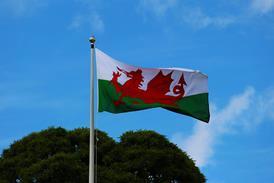Trustees have been blighted by low interest rates since 2008 and uncertainty about possible rises continues to make it hard to plan. LCP's Phil Boyle says schemes can still manage this risk.
The ultimate weapon for consultants and trustees has proved to be liability-driven investing.
LDI uses derivatives to buy protection from the risks of falling interest rates or rising inflation and boosts the efficiency of the investment strategy by increasing the amount of assets available for investment in return-seeking assets.
However, LDI also creates a Gordian Knot problem (a complex issue that feels unsolvable) for many trustees: the more LDI protection we buy, the more we protect the scheme from further falls in interest rates.
At the same time we lock in this deficit level, so the scheme will not benefit as much from unexpected future rises in interest rates.
Rate wait
As global inflationary pressures seemed to be growing, Mark Carney, governor of the Bank of England, recently commented that the first rate hike was approaching.
The Bank of England quickly dampened the excitement, saying it was unlikely to be in 2015. Now, the fallout from China means rate rises may be pushed back even further.
If [rates] rise more quickly than this, deficits will start to shrink. If they rise more slowly than this, then deficits will continue to grow
Financial markets predict that the first four 0.25 per cent rate rises will occur in April and August 2016, and in March and October 2017 – although that was before the news of China's economic slowdown.
If they rise more quickly than this, deficits will start to shrink. If they rise more slowly than this, then deficits will continue to grow.
Of course that assumes everything else stays the same, which it will not.
The bad news is that research by Goldman Sachs on US interest rates covering the past 30 years showed that when interest rates have been stable or falling – about 80 per cent of the time – then the markets nearly always overestimate how quickly they will rise in the future.
This is a recipe for even bigger deficits, and LCP’s research department confirmed the US experience applies to the UK as well.
The silver lining is that the same researchers say that once interest rates do start rising, the markets nearly always underestimate how quickly they will rise.
So if Carney was right and the first increase is soon, and the increases keep coming, then we could be near the beginning of a valuable recovery for UK pension scheme funding levels.
No certainty
However, in the past five years many people have predicted rising interest rates. Instead, deficits have continued to grow due to interest rates falling ever lower.
The simple truth is that yields have stayed low for longer than most people thought possible and they could continue to do so in the future.
If Carney was right and the first increase is soon, and the increases keep coming, then we could be near the beginning of a valuable recovery for UK pension scheme funding levels
Unfortunately, this is not the sort of Gordian Knot problem that can be solved with a sword. We have to accept that interest rates could move higher or they could move lower.
Trustees should therefore avoid waiting for a sudden rise in interest rates to rescue them, and they certainly should not press pause on the recovery plans.
They should keep derisking investment strategies each year as scheme liabilities mature, and gradually nudge up the levels of interest rate protection and inflation protection to reduce pension scheme risks.
So if and when interest rates do rise sharply, it could be a windfall gain that schemes can utilise to speed up the journey to full funding or speed up the derisking process – or a bit of both.
In other words, hope for the best, plan for the worst and definitely do not press pause on any of the plans in progress even if you believe the world will return to normal soon. It may not.
Phil Boyle is an investment partner at LCP














